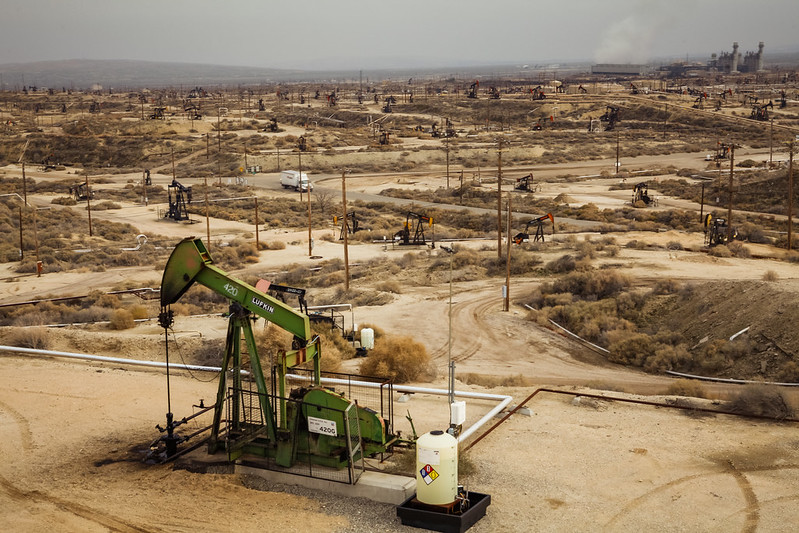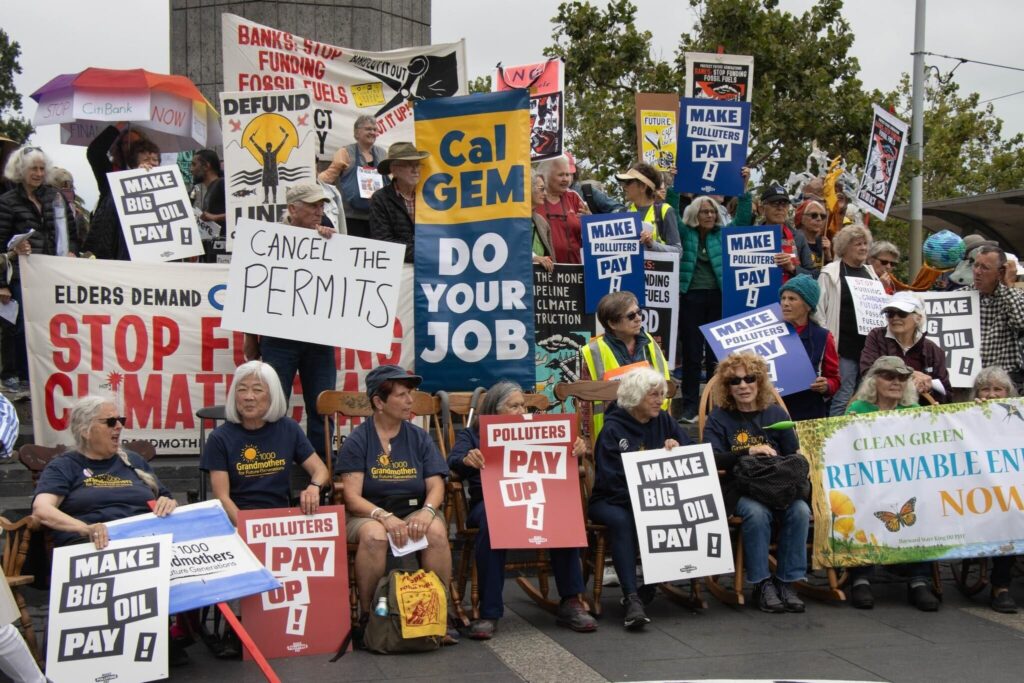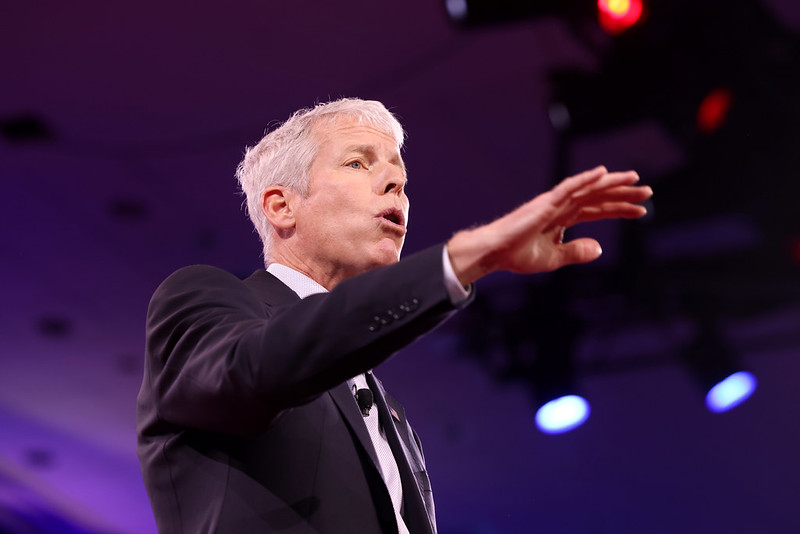As two of California’s largest oil and gas companies join by corporate merger, state regulators are declining to apply tough new rules governing the transfer of defunct oil and gas wells, DeSmog has learned.
But a growing chorus of California legislators say that nonenforcement stance violates a groundbreaking law they fought to pass just months ago — and they, along with dozens of environmental groups, are demanding that regulators change course.
“They’re just ignoring the statute,” Kassie Siegel, director of the Climate Law Institute at the Center for Biological Diversity, said in an interview. “We need the governor to step in and tell the agency to follow the law,” she added, referring to CalGEM, the agency that oversees oil and gas regulations.
Subscribe to our newsletter
Stay up to date with DeSmog news and alerts
On July 1, the California Resources Corporation (CRC) announced that it had completed its acquisition of competitor Aera Energy in an all-stock transaction, a merger that stands to make the combined company the state’s largest onshore oil producer. In a press release, CRC President and CEO Franscisco Leon called it a “transformational deal,” one that would “help the Golden State meet its ambitious climate goals.”
But critics say the deal should never have been allowed to proceed this far under California rules — not without CRC issuing a massive financial assurance bond, one big enough to cover the cost of safely shutting down Aera’s thousands of idle and low-performing wells. They’re pointing to AB 1167, signed into law by California Gov. Gavin Newsom in October 2023, which was intended to prohibit any company from selling or transferring such wells without first issuing bonds large enough to fully fund their cleanup.
“It’s pretty simple,” said state representative Wendy Carrillo, who sponsored the legislation, in emailed comments to DeSmog. “Any oil company that drills in California must also be responsible for cleaning and capping that oil well once it no longer produces, and in the event wells are sold, the new operator must provide the financial assurance via a bond to ensure the wells are not left abandoned.”
By law, industry must shutter unused wells, a process that can cost over $100,000 per site. But specific requirements vary from state to state, and companies routinely avoid their plugging obligation in practice — either by exploiting legal loopholes that allow them to defer the task indefinitely, or by selling wells to smaller companies that then declare bankruptcy before plugging.
Both scenarios put the public at risk.
“If not properly plugged and abandoned, these wells and facilities can contaminate waterways and soil, serve as a source of climate and air pollutants, and can present physical hazards to people and wildlife,” CalGEM concluded in a 2023 legislative report. Leaks of methane, a potent greenhouse gas, and cancer-causing chemicals like benzene are among the top concerns.

Oilfields in Kern County, California, where Aera Energy owns thousands of idle wells. The merger with CRC will put an unprecedented number of low-performing wells in the hands of one operator. Credit: Bureau of Land Management California (PDM 1.0 DEED)
Federal and state money is available for plugging in the event that companies can’t pay. But those funds only cover about two percent of what’s needed, according to a ProPublica analysis. In California, the situation is especially dire as oil profits face a steep decline. A 2023 report by the nonprofit think tank Carbon Tracker found that the state’s remaining oil reserves will generate another $6.3 billion in revenue. But the cost of safely shuttering all its unplugged wells will be at least $13 billion — a looming, $7 billion cash shortfall that the industry can’t possibly hope to cover on its own.
AB 1167 was written to help ensure that these cleanup costs don’t fall to the public. By mandating that idle and low-producing wells can’t change hands until they’re fully bonded with CalGEM, lawmakers had hoped to make it harder to walk away.
Aera Has More Than 9,000 Idle Wells
In February, when CRC announced its intent to purchase Aera, the law faced a critical first test. Aera is California’s second-largest holder of idle wells, behind only Chevron, according to a December 2023 report from the Sierra Club. DeSmog’s review of public CalGEM data found that Aera currently has over 9,200 wells classified as “idle” by the state. It would take Aera at least $800 million to fully bond all those wells with CalGEM, based on the agency’s average plugging cost of $87,000 in the state’s central region, where most of Aera’s wells are located.
But AB 1167 doesn’t just require companies to bond idle wells before transferring them. In the event of a sale, a company must fully bond its low-producing wells, too. Aera has thousands of wells producing below the average daily threshold of 15 barrels of oil or equivalent, according to DeSmog’s analysis of 2022 data compiled by Fractracker, a nonprofit advocacy group — bringing the potential bonding requirement to well over $1 billion. For context, CRC valued Aera at only $2.1 billion in the deal.
For Carrillo, the language of the law is clear: Those at-risk wells should be bonded before the merger goes through.
“I wrote AB 1167, and worked with a coalition of environmental advocates to ensure it was signed into law despite heavy opposition from the oil industry,” she wrote in an email to DeSmog. “This deal highlights the exact need for the bill.”
In the months following the merger announcement, it had been unclear how — or if — CalGEM would apply AB 1167. But documents obtained by the nonprofit National Resources Defense Council via public records request, and shared with DeSmog, show CRC worked behind the scenes to suggest Aera’s wells should not be subject to the rules.
On February 15, shortly after the proposed deal was announced, CRC assistant general counsel Kate Tyler emailed a representative at California’s Department of Conservation (CalDOC), which oversees CalGEM, with information on the deal. An attached document describing the terms of the proposed merger claimed “there will be no change in the organizational structure of Aera Energy LLC or its operating subsidiaries as a result of this transaction.”
That argument had critical relevance to AB 1167. The law stipulates that any entity that “acquires the right to operate a well or production facility by purchase, transfer, assignment, conveyance, exchange, or other disposition” must fully bond that well with CalGEM. But CRC seemed to be suggesting that, because Aera’s assets would remain nestled under its existing corporate structure, the wells weren’t really changing hands.
At the same time, in the first quarter of 2024, Aera spent over $67,000 on lobbying, including on topics related to “1167 implementation,” according to a public filing.

In the following months, as CRC swiftly moved toward completing its acquisition of Aera, it remained unclear whether CalGEM would subject the merger to AB 1167’s bonding requirements. The agency repeatedly declined to answer DeSmog’s emailed questions about its plans for enforcement, and turned down a request for interviews.
On June 11, as the merger drew closer to completion, Carrillo and nine other state assembly members and senators wrote to CalGEM supervisor Doug Ito to “respectfully urge [him] to enforce AB 1167 … in the pending merger.”
“This merger is precisely the sort of transaction that AB 1167 was designed to address,” they wrote, noting that the law’s “wording triggers the full-cost bonding requirement upon any type of transfer.”
“We urge you to implement the statute as we intended when passing this bill,” they wrote.
By June 21, the lawmakers had not yet received any response. On that date, leaders from six environmental groups followed up in a second letter to Ito, one that copied other government representatives including CalDOC director David Shabazian and Lauren Sanchez, senior climate advisor to Gov. Gavin Newsom.
“We have grave concerns that the oil industry is attempting to evade the critical protections in AB 1167,” they wrote. “We are asking you to immediately state that California Resources Corporation’s acquisition of Aera Energy LLC and its wells must not be finalized prior to compliance with AB 1167’s full bonding requirements.”
They pointed out that CRC would control around 16,000 idle wells after a completed deal — about 40 percent of all the idle wells in the entire state. That’s a “staggering” liability, they wrote, especially considering how quickly oil and gas production is declining across the state.
‘Mind-boggling’ Position
On June 27, CalDOC director Shabazian finally responded to the lawmakers’ inquiry. It was the response they feared; the agency, he wrote, had decided that AB 1167 was not relevant to the merger. He used the same logic proposed by CRC: “It is evident that only ownership of Aera LLC is being transferred, not any of Aera’s assets.” The company was changing hands, in other words, but not the wells themselves. He also noted that AB 1167 makes no specific mention of stock transfers, even though the bill is broadly written to include transfers “by any other disposition.”
“It is mind-boggling that CalGEM has taken this position,” said Siegel, who signed the June 21 letter on behalf of the Center for Biological Diversity. “It’s a terrible dereliction of duty.” She also called Shabazian’s claim that the law doesn’t apply to stock transfers a “nonsensical statement.”
“It just couldn’t be any more clear that CRC does, in fact, control Aera’s wells,” she said. “Therefore, the state has to require full bonding.”
“Aera is being fully subsumed by CRC, so CRC should be the operator of record,” Rep. Carrillo wrote, in her comments to DeSmog. “CalGEM’s interpretation of AB 1167 is extremely concerning.”
Jasmine Vazin, a senior campaign organizer with the Sierra Club, pointed out that CalGEM also recently tried to approve a suite of new drilling permits within a protected 3,200-foot “setback zone” just hours before new rules banning that practice took effect.
“With both of these things happening in tandem, it definitely feels like the agency is going rogue,” she said. “The mandate of CalGEM is to protect public health and the interests of Californians. But time and time again these disappointing decisions are being made.”

CalDOC media spokesperson Jacob Roeper said the department had no comment on the findings in this piece. Gov. Newsom’s office had no comment except to direct DeSmog to director Shabazian’s letter.
On July 1, days after Shabazian’s response, CRC announced that it had completed its acquisition of Aera. But the debate about AB 1167’s implementation is still raging. On July 8, representatives from 77 environmental and public health groups sent a letter to Supervisor Ito, writing that CalGEM’s interpretation of AB 1167 “is inconsistent with the letter and spirit of the law.” They urged him not to recognize the merger as final until Aera’s at-risk wells are fully bonded.
“CRC has already filed for bankruptcy once,” they wrote, referring to the company’s 2020 restructuring, which wiped out the $5 billion in debt. (CRC had been saddled with the debt by its former owner, the oil and gas multinational Occidental Petroleum, which spun off its California operation to create CRC in 2014.) “CalGEM should not allow such a financially precarious company to control 40 percent of the wells in the state,” the letter states.
On July 2, the day after the CRC announced its Aera acquisition, a group of concerned citizens — organized by 1000 Grandmothers for Future Generations and Third Act, as well as the Oil and Gas Action Network, three groups that signed the July 8 letter — gathered on San Francisco’s Embarcadero Plaza to protest CalGEM’s stance on the merger. Demonstrators hoisted a banner that read “CalGEM: Do Your Job.”
CRC and Aera did not respond to requests for comment on this story.
Cesar Aguirre, oil and gas director of the Central California Environmental Justice Network, signed the June 21 letter. In Kern County, where many of Aera’s wells are located, he said, the communities he serves deal far too often with poor air quality and dangerous leaks from nearby wells.
“The state doesn’t have enough money. The current bonding is not enough,” he said, arguing that the state’s oil and gas companies are “dumping accountability elsewhere” by finding ways to avoid bonding their wells.
“We can’t really let them get away with that,” he said.
Subscribe to our newsletter
Stay up to date with DeSmog news and alerts






